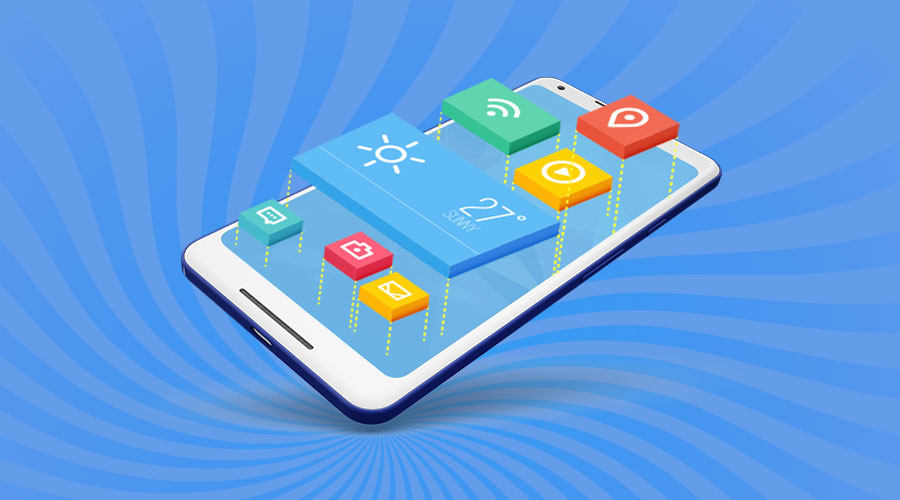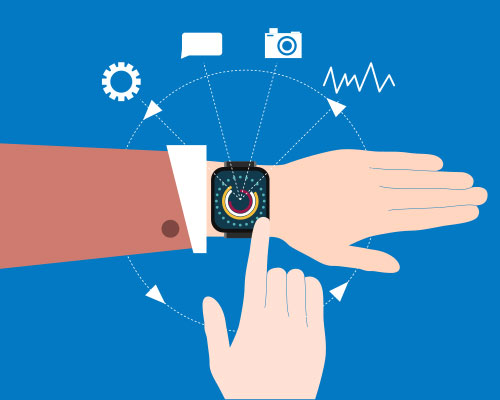How Changing Trends will affect Mobile Apps in 2018
In past few years, mobile app development companies have adopted different changes and advancements, and have laid the path for new developments in the digital space. While applications of artificial intelligence is one of the most prominent such developments, something as small as improvements in voice input have created big changes by paving the way for Natural Language Processing algorithms ready to take over the voice segment in mobile app development.
So, with all this happening right before us, we can expect 2018 to be a crazy ride for mobile applications. Care to know in what ways? Here is something to help you know:

Natural Language Processing (NLP)?
NLP algorithms have arrived, and thus arrives one of the most anticipated technologies. NLP is supposed to benefit mostly the enterprise mobile apps by improving records creation and maintenance capabilities, and achieve better accuracy in the same. And because at its core, NLP contain artificial intelligence, the technology can also be used deduce sense logic in old documents and extract only the legitimate information to create a comprehensive document. Another quite significant use of NLP is machine translation which is going to be used in translation apps like Google Translate, which are doing a good job, but at present, lack perfect sense in translations.
Accelerated Mobile Pages:
So far, we have heard of Accelerated Mobile Pages (AMP) technology for websites. But recently, some of the mobile app development companies now offer AMP integration for mobile applications. With AMP on mobile apps, users can render text, media, or videos, near-instantly. What is fascinating about integration of AMP with mobile apps is that it provides even better user experience than native apps and have low latency in response times. Another way it benefits users is how it reduces bandwidth consumption on phones, which is quite a blessing if you ask people of countries where mobile app tariffs rates are tearing the roof.
Face Recognition:
Some would argue that what Apple achieved in iPhone X, Android achieved way back in its Lollipop release. But then I and most of the people who are aware of how iPhone X made it possible is way more advanced than how Android did it. FYI, Android only matched the facial diagram and features through its front cam, while Apple it with infrared facial contour readers, plus a dedicated analytics engine, which sits exclusively within the panel to do the job. Long story short, facial recognition has truly arrived and mobile apps are most probably going to airtight the security by even higher degrees. Especially in digital payments space, facial recognition could be the most genuine way of making transfer without even needing to use the fingerprint, which has sometimes malfunctioned for people for different reasons. In 2018, some of the biggest apps are expected to take up Facial Recognition seriously for iOS platform, which could be a good specimen for Android standing in the cue to see how Apple does with integrating Facial Recognition in mobile apps.
Wearable Technology
Wearable technology has proved its mettle when it comes to extending connectivity. It allows us to do a lot more than just staring at our smartphones, hoping for something interesting to appear. Until now, we have had wearable technology in different applications, all of which somewhat correspond to connecting with our smartphones in some way. However, in 2018, we are in for a change when IoT applications will be working in full-fledged coordination with wearable technology to send information that can be used to improve user experience, as well as integrating with user’s routine to assist them in various tasks, consolidated into a single solution. We expect more of such solutions that can coordinate different function like recording fitness routine, linking health data to our physician and healthcare portal, calling a cab, reminding for emails, meeting, schedules and much more.
Mobile apps are undoubtedly the most remarkable components of the current digital scenario. And what makes them even better is their ability to customize themselves according to the requirements of the customers and users. This is why mobile apps have survived different generations and version of digital developments and will continue to do so with ease.


